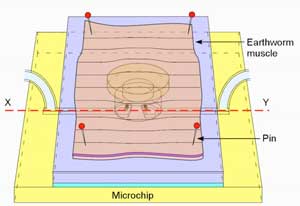 Researchers have developed the first microchip valve powered by living cells. Earthworm muscle tissue allowed for a high contractile force that could be sustained for minutes, and unlike electrically controlled valves, did not require any external power source such as batteries.
Researchers have developed the first microchip valve powered by living cells. Earthworm muscle tissue allowed for a high contractile force that could be sustained for minutes, and unlike electrically controlled valves, did not require any external power source such as batteries.
Tuesday, July 9, 2019
Cyborg-like microchip valve driven by earthworm muscle
 Researchers have developed the first microchip valve powered by living cells. Earthworm muscle tissue allowed for a high contractile force that could be sustained for minutes, and unlike electrically controlled valves, did not require any external power source such as batteries.
Researchers have developed the first microchip valve powered by living cells. Earthworm muscle tissue allowed for a high contractile force that could be sustained for minutes, and unlike electrically controlled valves, did not require any external power source such as batteries.
Physicists? finding could revolutionize information transmission
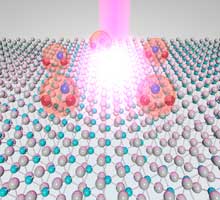 A research team led by physicists, has observed, characterized, and controlled dark trions in a semiconductor ? - ultraclean single-layer tungsten diselenide - a feat that could increase the capacity and alter the form of information transmission.
A research team led by physicists, has observed, characterized, and controlled dark trions in a semiconductor ? - ultraclean single-layer tungsten diselenide - a feat that could increase the capacity and alter the form of information transmission.
Vitamin C protects MXenes from rapid degradation
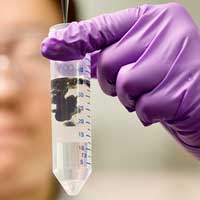 In work that could open a floodgate of future applications for a new class of nanomaterials known as MXenes, researchers have discovered a simple, inexpensive way to prevent the materials' rapid degradation.
In work that could open a floodgate of future applications for a new class of nanomaterials known as MXenes, researchers have discovered a simple, inexpensive way to prevent the materials' rapid degradation.
Nanoscale visualization of the distribution and optical behavior of dopant in GaN
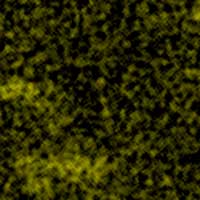 Significant advances in the understanding of P-Type GaN semiconductor formation mechanisms and techniques enabling mass production of GaN devices.
Significant advances in the understanding of P-Type GaN semiconductor formation mechanisms and techniques enabling mass production of GaN devices.
New imaging method aids in water decontamination
 Scientists have developed a method that can image nonfluorescent catalytic reactions - reactions that don?t emit light - on nanoscale particles.
Scientists have developed a method that can image nonfluorescent catalytic reactions - reactions that don?t emit light - on nanoscale particles.
On-demand control of terahertz and infrared waves with graphene
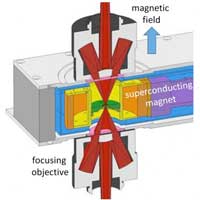 A theory from 2006 predicts that it should be possible to use graphene in a magnetic field not only to absorb terahertz and infrared light on demand but also to control the direction of the circular polarisation. Researchers now have succeeded in testing this theory and achieved the predicted results.
A theory from 2006 predicts that it should be possible to use graphene in a magnetic field not only to absorb terahertz and infrared light on demand but also to control the direction of the circular polarisation. Researchers now have succeeded in testing this theory and achieved the predicted results.
Subscribe to:
Comments (Atom)
